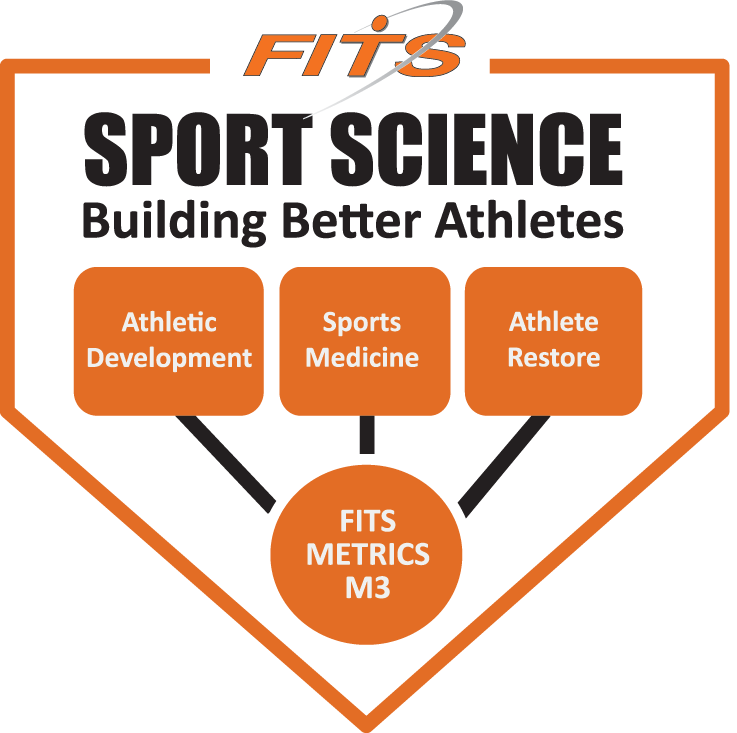
With the NBA draft this coming Thursday, let’s take a look at Andrew’s Wiggin vertical jump – courtesy of our friends at P3. This is an awesome group, headed by Dr. Marcus Elliott. They are doing great things and this video is only the tip of the ice-berg.
https://www.youtube.com/watch?v=iaP6JFHAFhE
In case you’ve missed it, here is a link I did on the analysis of what makes Andrew Wiggin’s Next, last year. I’ll provide my thoughts based on the video and our past analysis of Andrew Wiggins and work with elite jumping sport athletes. But before that here are the direct comments from the awesome team at P3:
“When evaluating Andrew’s unique athletic gifts and movement skills through the lens of scientific data, the thing that stands out most is his relaxation and utilization of the stretch shortening cycle (SSC). During the passive or free-fall phase of the counter movement jump (CMJ), Andrew almost completely un-weights himself. There is almost no resistance or co-activation form opposing muscle groups. His relative free fall of 12.85 n/kg is the greatest we’ve seen from an NBA or pre-draft athlete tested at P3 and almost 2 standards deviations above the NBA mean.
During CMJ free fall, the average NBA athlete will go through 2 deg of dorsiflxion, 14 deg of knee flexion and 34 deg of hip flexion. Andrew goes through 8 deg of dorsiflexion, 2 deg of knee flexion and 42 deg of hip flexion. Due to his ability to relax, Andrew is able to effortlessly sink into his powerful hips and store a great deal elastic energy, ultimately leading to him being able to produce an insane amount of vertical concentric force. In fact, Andrew produces more relative peak concentric force in this movement than any NBA or pre-draft athlete we have tested at P3. Additionally, he gets 604.2 deg of hip extension velocity, which is a full standard deviation above the NBA mean.
Critical to aiding in his beautifully synchronized and powerful jump is the range of motion and velocity at which he able to move his shoulder and arm through. This arm swing is also indicative of full body relaxation and a quality that all of our elite jumpers possess.
Relaxation or the ability to not hold tension is critical to peak power and velocity. Andrew happens to have some of the best relaxation and movement skills we have ever seen at P3. Relaxation can be trained. Fortunately for Andrew he was born with it along with some other athletic gifts. At P3, we use sports science to characterize each of our athletes in great detail and develop incredibly specific training programs based on each athlete’s unique physical systems.”
My comments:
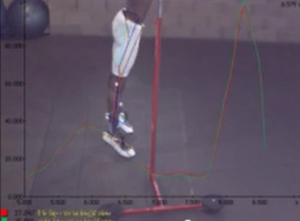
Strength – Length Curve
Each athlete has a unique position they like to develop power from. This position is typically around the quarter squat position. The variance in this position is not huge; 15 degrees max, and is based on a host of interconnected and separate anthropometric and muscle physiological properties.
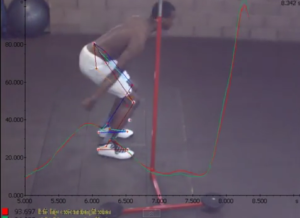
I’ve tested Andrew in the past and he develops power exceedingly well above the quarter squat position. The team at P3, noted that Andrew moves through 2 Deg and 42 Deg of knee and hip range of motion vs. the NBA average of 8 Deg and 34 Deg. What this means is Andrew’s sweet spot is knee slightly bent and back aggressively hinged. We’ve seen this position in several of our elite jumping sport athletes (i.e. Sam Schacter) who are able to combine explosive back extension with their leg power to jump.

When I see an athlete jump like this (small knee bend, high hip position, and bent over aggressively at the waist, utilizing huge back extension during their jump) I:
- Get concerned about the following:
- See potential in developing the following:
- I’m interested to see how the perform the following:
Stiffness, Storage of Energy and the determinants of Vertical Jump.
Jumping high can be taught and there are 7 Major determinants of Vertical Jump. Motor coordination is very important, which integrates power from 3 power generators that work in a coordinated fashion to store, release and produce force to accelerate the body upwards. Andrew is a highly reactive athlete, capable of developing world class power in a very limited range of knee bend. This ability combined with his back extension power, his storage of elastic energy during pre-load (see next point), and as P3 has identified his ability to “relax” and drop all reflect his world leading motor coordination. It is the complete coordination of these factors which is responsible for his jumping ability. Now that being said, I believe his ability to develop tremendous force, as P3 identified “Andrew produces more relative peak concentric force in this movement than any NBA or pre-draft athlete we have tested at P3.” is a primary reason for his vertical jumping ability. To develop this quality, we aim to focus on developing strength and power in this position utilizing some of the following exercises: hang position olympic lifts (hang clean, hang snatch), oscillation squats, partial squats, stairs, reactive / plyometrics, absolute power / shock methods (drop jumps), medicine ball slams and jumps (this is especially valuable to gain integration with the arms, low back with leg power) which are integrated into our overall programming for our athletes. Note this process takes time and a systematic approach. Trying to accelerate this process by skipping steps is a sure method to reduce your potential and to become injured.
“The Rock Back”
During loading he rocks back onto his heel. You can actually see his fore foot raises off the ground as he uses this technique to store energy into his system – particularly his posterior chain (hamstrings, low back fascia). This position really preloads his system, which given his long limbs (6’8”) aids in his ability to jump. His ability to store and release energy very quickly is one of his greatest attributes. It’s a quality that is a key determinant for all athletes to posses. Here is a video of Stefan Holm – notice that he is not a visibly powerful athlete. However, he is able to utilize elastic stored energy very well, because of his incredible motor coordination, utilizing his entire body precisely to achieve is world shocking athleticism.
https://www.youtube.com/watch?v=ZG3_I3zFB0U
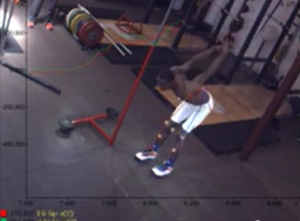
Problems?
I love looking at video to get an “impression” of what is going on. Video analysis is one tool, but there are limits. Delving deeper into sport science analysis we can understand: muscle firing patterns (that value of that is deeply contested because of individual variability), rate of force production, ground reaction forces, joint angular velocities and the timing / motor coordination of the system at key joints, amongst other emerging technology. All this said, here are some of my observations (these points are observable but the relevance of each needs discussion)
- Right foot collapse and slight toe out during pre-load and force production
- Torque / rotation to left and landing mechanics. During a simple counter movement jump, Andrew ops to throw his body into a seemingly out of control position to gain height. This strategy puts him into a very awkward position when he lands.
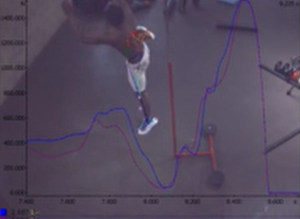
- Dynamic knee valgus when he pre-loads. This is a very common movement “strategy” / “dysfunction”, which indicates an energy leak, which is linked with ACL ruptures, anterior knee pain, jumper’s knee, patello-femoral knee problems and a host of other MSK (musculoskeletal) injuries above and below the knee. Note, I said this movement “strategy”, because I’ve seen many elite level jumpers during 2 foot jumps display this position during loading. Andrew moves out of this position when developing maximal force into an ideal position. Knowing when dynamic valgus occurs compared to peak concentric forces, peak eccentric forces, and lower limb joint position, is very to understand the implication to injury and performance.
Who jumps higher? Tyrell Bramwell, Dan Dearing or Andrew Wiggins?
You may not know who Tyrell Bramwell or who Dan Dearing are. Tyrell and Dan are both volleyball players with world class jumping ability. Tyrell is recovering from an ACL rupture and repair. jump for years. Dan is also coming back from severe Jumper’s Knee which has impacted his ability. Both are coming back better than ever. Here is a picture of Tyrell jumping compared to Andrew. Note the Vertimax is a standardized piece of equipment, meaning that the red stem height is identical with all Vertimaxs. This information is valuable, because look at the height of their knees in relation to the stem height. I think you can easily see who is higher. Now this is relevant, because how we develop vertical is very, very important because it is the gateway to many components of athleticism – such as sprinting, acceleration, agility, change in direction ability, first step quickness, and most importantly sport performance. How we develop vertical will be explained soon…

I hope you enjoyed the analysis. Don’t be shy to message me, write a comment, or better yet, let us help you in your athletic performance. We will have several exciting announcements to make very shortly – so stay tuned!
Dr. Lam
